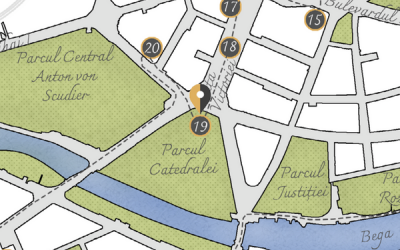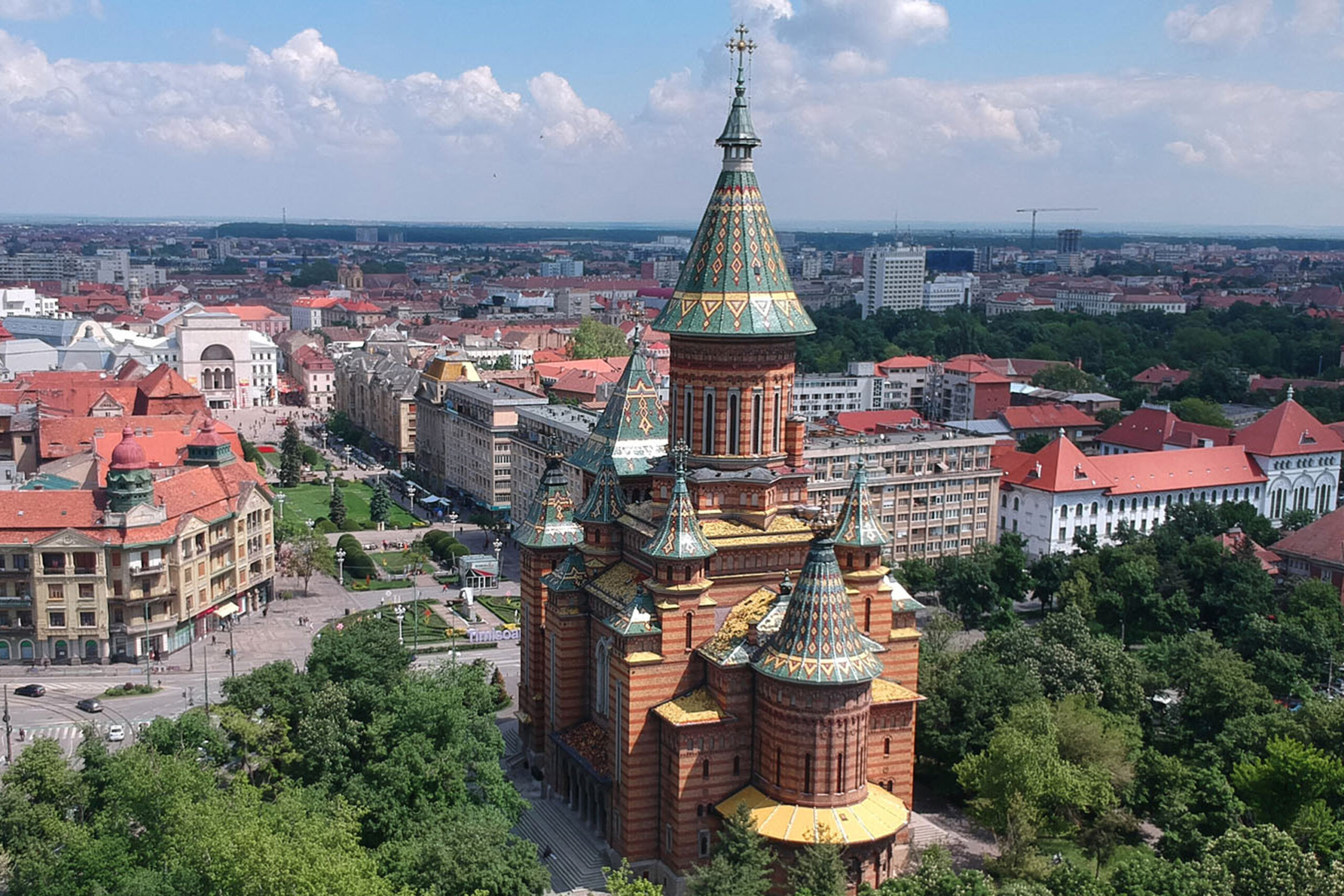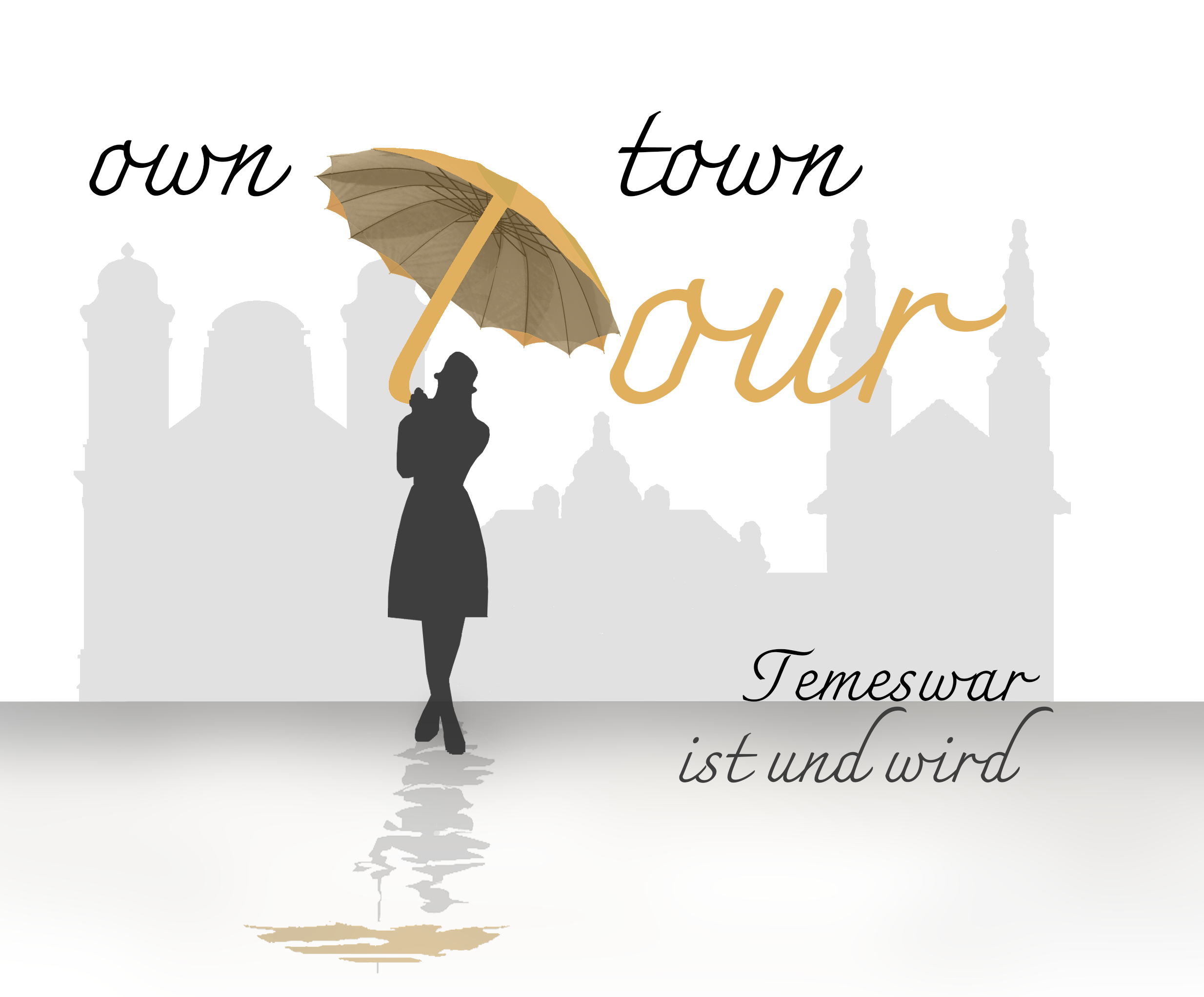Orthodox Cathedral
Bulevardul Regele Ferdinand I
1936 – 1941
Sacred buildings


The Crowning Glory
Today, it is impossible to image the Corso, the new centre of Timisoara, which arose at the beginning of the 20th century after the demolition of the old fortress walls, without the cathedral at its end.
And yet it still took some time after the fall of communism until the area of the elongated square, “Piata Victoriei”, reached its limit. The crowning glory of the new urban centre on the green banks of the Bega is the Romanian Orthodox Episcopal and Metropolitan Cathedral of the Three Holy Hierarchs.
The Orthodox Cathedral was built in the second half of the 1930s according to plans of architect Ion Traianescu. He created a church with an interesting mix of styles. It contains elements of the Byzantine style through the side vaults, although the domes are missing. Instead, there are eleven towers with colourfully enameled roof tiles arranged in typical Romanian ornamental patterns. The large dome in Neo-Moldovan style is reminiscent of the monasteries of Moldova, but traces of the architectural style of Hagia Sophia, the most famous Byzantine cathedral, are evident.
The mosaic floor of the cathedral is a masterpiece from head to toe. The mosaic patterns are of traditional Banat carpets, a reminder of the historical region and the religious centre that this church represents.
During the interwar period, Timisoara, Romania’s westernmost city, flourished again. The self-confidence of the economically flourishing capital of the Banat, referred to in Romanian as “Banatu-i fruncea”, or “forefront of the country”, is manifested in an exemplary manner in the Orthodox cathedral.
The consecration took place in 1946, by the still reigning monarch King Michael, during a difficult time of upheaval. Reprisals from the communist dictatorship followed, with which the new rulers tried to suppress not only orthodox Christians, but all faiths.
It is no coincidence that the people’s struggle for freedom during the 1989 uprising took place directly in front of the steps of the cathedral, and so this is exactly where the main memorial for the victims of the revolution is located.
The Orthodox Cathedral, the religious centre of the Banat, enjoys great popularity and can be visited as part of guided tours. The guided tours also include the unique collection of church art in the basement, where the relics of the patron saint of Romanian Orthodox believers of the Banat rest.
Today, the Orthodox Cathedral is, without exaggeration, an important landmark of Timisoara, which crowns the “Corso” in a special way.
Tour sights
- 1. Theresia Bastion
- 2. Lutheran Church
- 3. Union Square
- 4. Saint George’s Cathedral
- 5. Serbian Orthodox Cathedral
- 6. Miksa (Max) Steiner Palace
- 7. Brück House
- 8. Dicasterial Palace
- 9. Klapka Library
- 10. The “Guild Tree”
- 11. St. George's Square
- 12. Prince Eugene House
- 13. Citadel Synagogue
- 14. Liberty Square
- 15. Huniade Castle
- 16. National Opera House
- 17. Victory Square
- 18. Corso
- 19. Orthodox Cathedral
- 20. Piarist Ensemble
- 21. Reformed Church
- 22. Doja Street
- 23. Journey through Time
- 24. Rose Garden

